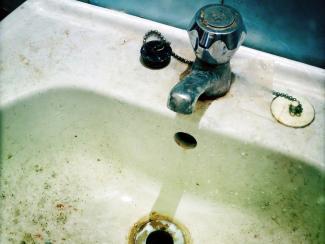
Via NeedPix
Flint, MI had been without clean, lead-free water for almost five years. Finally, after the city’s contaminated water made national headlines, it appears that the water is clean enough to drink.
Back in 2014, the city attempted to cut costs by changing its water supply. This resulted in a health crisis so major that then-President Obama declared a “State of Emergency.” The city also faced backlash for first refusing to acknowledge the problem, and then struggling to resolve it:
“City and state officials denied for months that there was a serious problem. By that time, supply pipes had sustained major corrosion and lead was leaching into the water. The city switched back to its original water supply [in 2015], but it was too late to reverse the damage to the pipes.”
For more than two years, Flint residents had no source of safe drinking water, and it took another couple of years to fix the entire water system. A new report indicates that the crisis - and delay in resolving it - may be because Flint is a majority-Black town.
The other major city with a lead contamination crisis in recent years is Newark, NJ, also a majority-Black city. The New York Times reports:
“Though lead has long been an issue here, the situation escalated in October [2018] after a spate of tests led to the distribution of faucet water filters - the same filters used in Flint, Mich. - to remove lead that had been leaching into tap water. But two weeks ago, more testing found that some of the filters were failing to adequately remove lead, and the city was forced to distribute bottled water.”
The new report, by the National Resources Defense Council and a coalition of other environmental justice groups, studied cities like Flint and Newark. Their analysis shows that not only are counties with higher proportions of people of color more likely to have water quality issues, but they also have to wait longer to get them fixed.
Colorlines reports: “The Safe Drinking Water Act (SDWA) was passed in 1974 to protect public drinking water across the United States. But… enforcement of the act varies greatly - and… the race of a community’s population is the major determinant of whether there will be violations.”
Despite water quality laws, “129,907,275 people (nearly 40 percent of the U.S. population) obtained their water from drinking water systems that were in violation of the law.”
Of all of those water systems, ones that served people “with the highest racial, ethnic, and language vulnerability” - meaning people of color and immigrants - were 40% more likely to be in “chronic noncompliance,” meaning their water was contaminated for the longest periods of time.
They close the report with this sobering analysis of the United States’ water quality enforcement: “For communities already facing severe burdens due to racism, social conditions, and/or environmental and health hazards, the inability to turn on a tap and receive clean, safe water is particularly devastating - and unjust.”